How ABA Therapy Improves Emotional Regulation in Children
Exploring ABA Therapy's Role in Emotional Regulation for Children
How ABA Therapy Improves Emotional Regulation in Children
Understanding ABA Therapy and Emotional Regulation
Emotional regulation is a critical component of a child's development, particularly for those on the Autism Spectrum Disorder (ASD). Challenges such as heightened emotional responses and difficulty in recognizing emotions can make regulation daunting for children with autism. Applied Behavior Analysis (ABA) therapy shines brightly here, providing structured methodologies to transform emotional challenges into manageable experiences. This article explores the nuances of how ABA therapy aids in emotional regulation, detailing the strategies employed, evidence supporting its effectiveness, and practical guidance for parents and educators.
The Psychological Foundation: ABA and Emotional Regulation
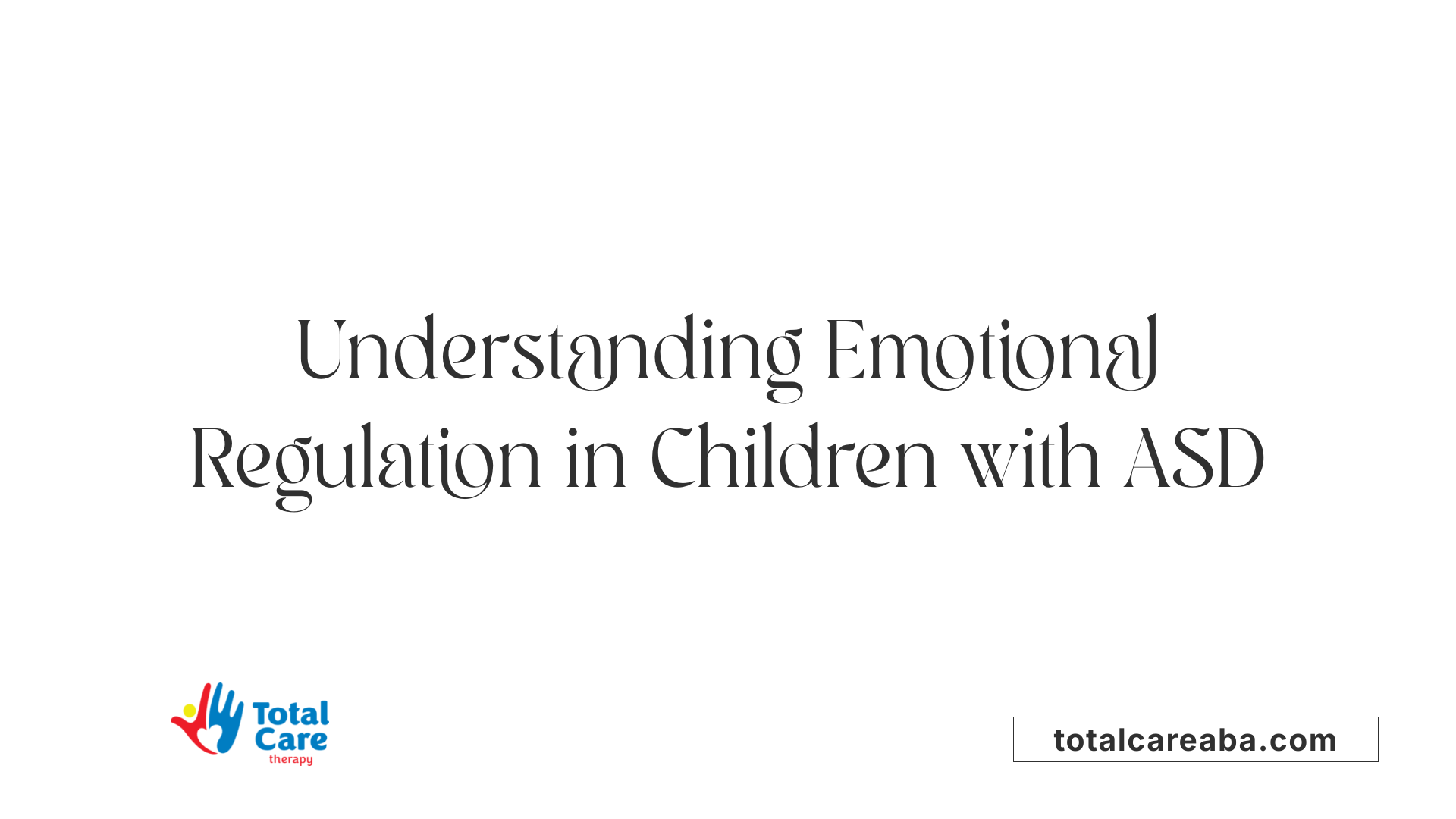
What is emotional regulation and why is it important for children?
Emotional regulation is the ability to recognize and manage one's emotional responses effectively. It is crucial for children, especially those with Autism Spectrum Disorder (ASD), as it helps reduce anxiety, prevent outbursts, and foster positive interactions. Children who can regulate their emotions are better equipped to handle challenging situations, engage in goal-directed behavior, and maintain calm during moments of distress.
How does ABA therapy facilitate emotional regulation?
Applied Behavior Analysis (ABA) therapy plays a pivotal role in aiding children with ASD in developing emotional regulation skills. Through structured interventions, ABA facilitates:
- Emotional Awareness: Children learn to identify their feelings, which is essential for managing emotional states.
- Expression and Management: Techniques such as visual supports and social stories enhance children’s understanding of emotions, allowing them to articulate their feelings more effectively.
- Coping Strategies: Therapists employ methods like deep breathing, counting, and role-playing scenarios to practice emotional responses.
The relationship between ABA therapy and emotional regulation is evident as structured interventions teach emotional awareness while positive reinforcement encourages children to apply these strategies during real-life situations. This systematic approach supports children in recognizing triggers and managing their responses before emotions escalate.
Emotional Challenges in Children with Autism
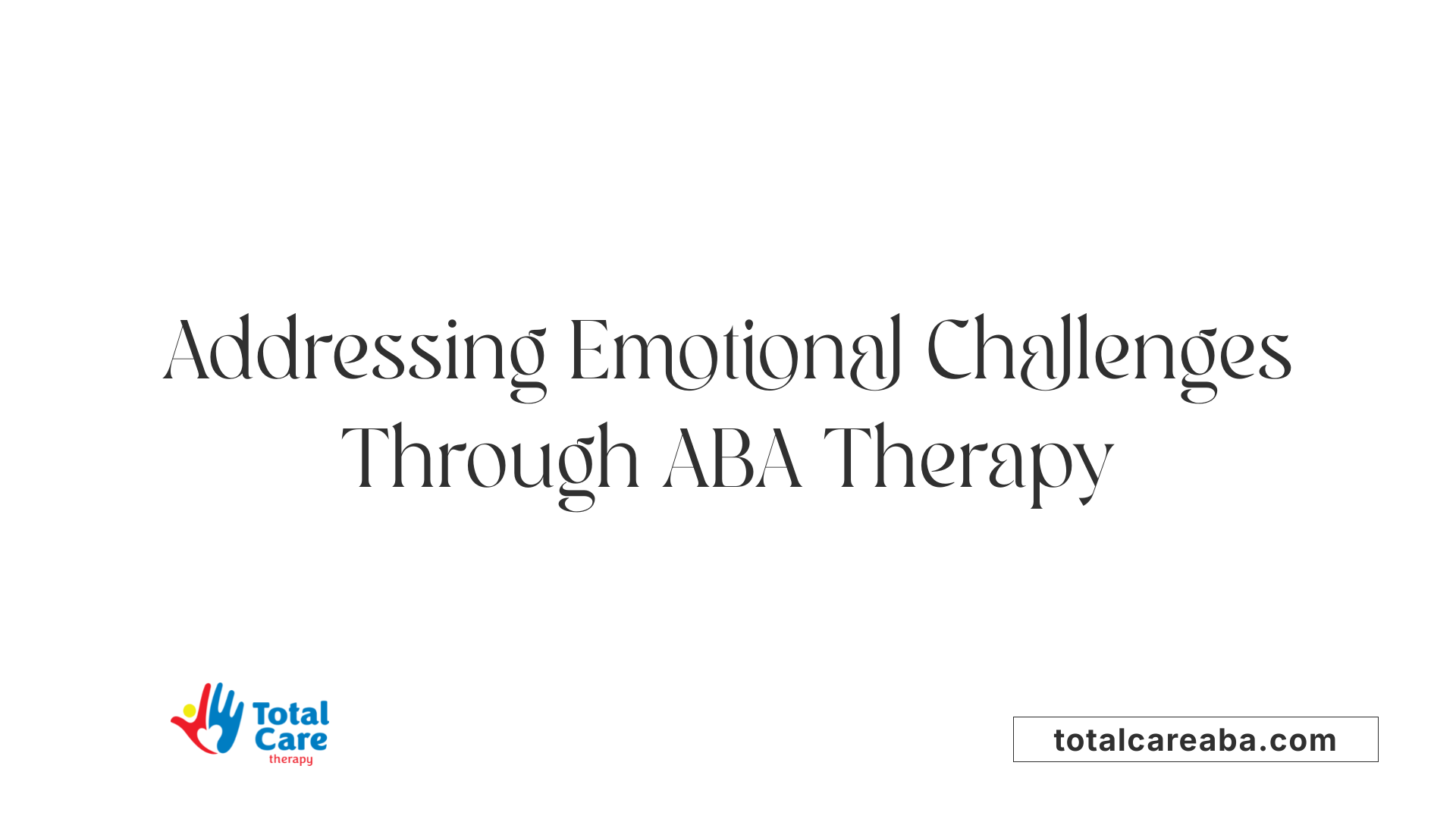
What emotional challenges do children with autism face, and how does ABA therapy address these challenges?
Children with autism spectrum disorder (ASD) often experience significant emotional difficulties. They may have heightened emotional responses and struggle to recognize or express their feelings. This internal conflict can lead to anxiety, social withdrawal, or even aggressive behaviors. As children with ASD may demonstrate less adaptive strategies to cope with these internal and external pressures, challenges can escalate into emotional dysregulation and outbursts.
ABA therapy plays a vital role in addressing these emotional challenges. This therapeutic approach focuses on identifying triggers and teaching emotional recognition, which is fundamental in helping children understand their emotional states. Through techniques such as visual aids, social stories, and role-playing, children learn to manage their emotional responses more effectively. Furthermore, therapists utilize methods like deep breathing, calming spaces, and routine reinforcement to help children regulate their emotions during overwhelming situations.
Moreover, engaging families in the therapeutic process enhances the child’s learning environment. By involving parents and caregivers, the strategies learned in therapy can be reinforced at home, fostering a supportive atmosphere for emotional development. Behavioral Skills Training (BST) and accurate data collection on emotional behaviors assist in tracking progress, ensuring that interventions are tailored and effective. Thus, ABA therapy facilitates essential skills that help children transform challenging emotional experiences into manageable situations.
Core ABA Strategies for Emotional Management
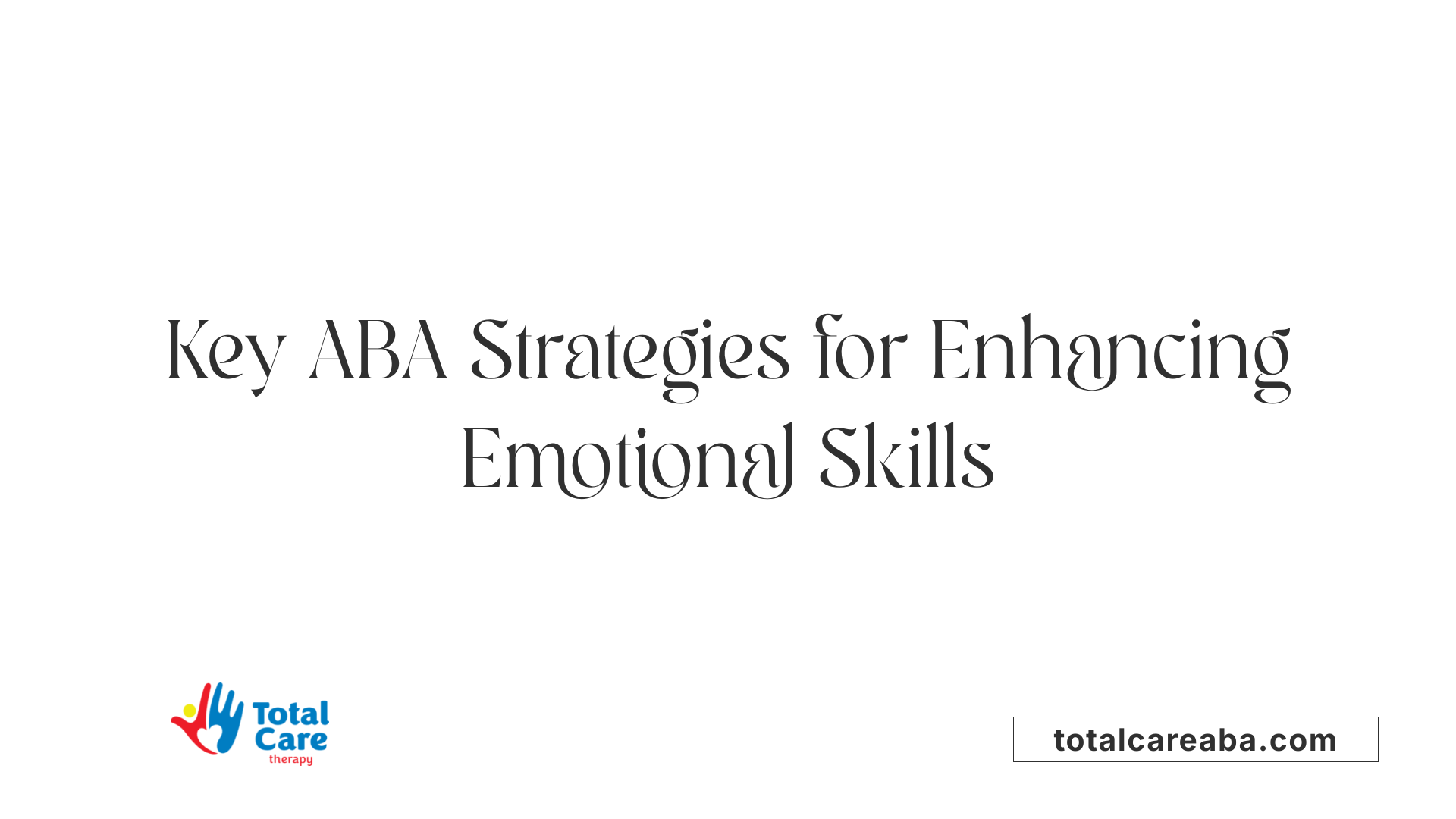
Key ABA Strategies for Improving Emotional Skills
ABA therapy provides a structured approach to help children with autism develop essential emotional management skills. Here are some of the core strategies:
- Visual Supports: These aids enhance children's understanding and communication around emotions, making feelings more tangible to them.
- Role-Playing: Engaging in role-play helps children practice how to express emotions appropriate to different situations.
- Emotion Labeling: Teaching children to label their feelings, like saying "I’m feeling frustrated," encourages self-awareness and understanding.
Examples of Interventions in ABA Therapy
Various interventions are effective in helping children with emotional regulation:
| Interventions | Description | Benefits |
|---|---|---|
| Behavior Skills Training (BST) | This includes Instruction, Modeling, Rehearsal, and Feedback to teach calming strategies effectively. | Improves ability to respond calmly to triggers. |
| Three-Point Scale | A system to categorize emotions (green, yellow, red) helps children identify their feelings and respond appropriately. | Encourages self-regulation by recognizing emotions. |
| Natural Environment Teaching | Incorporates emotional learning opportunities within day-to-day activities, ensuring that lessons are relevant and applicable in real-life scenarios. | Makes therapy practical and relatable. |
| Social Skills Training | This equips children with the skills to navigate social interactions, which often involve emotional exchanges. | Enhances emotional understanding in group settings. |
These strategies foster emotional understanding, helping children manage their emotional responses effectively.
Evidence-Based ABA Practices for Emotional Regulation
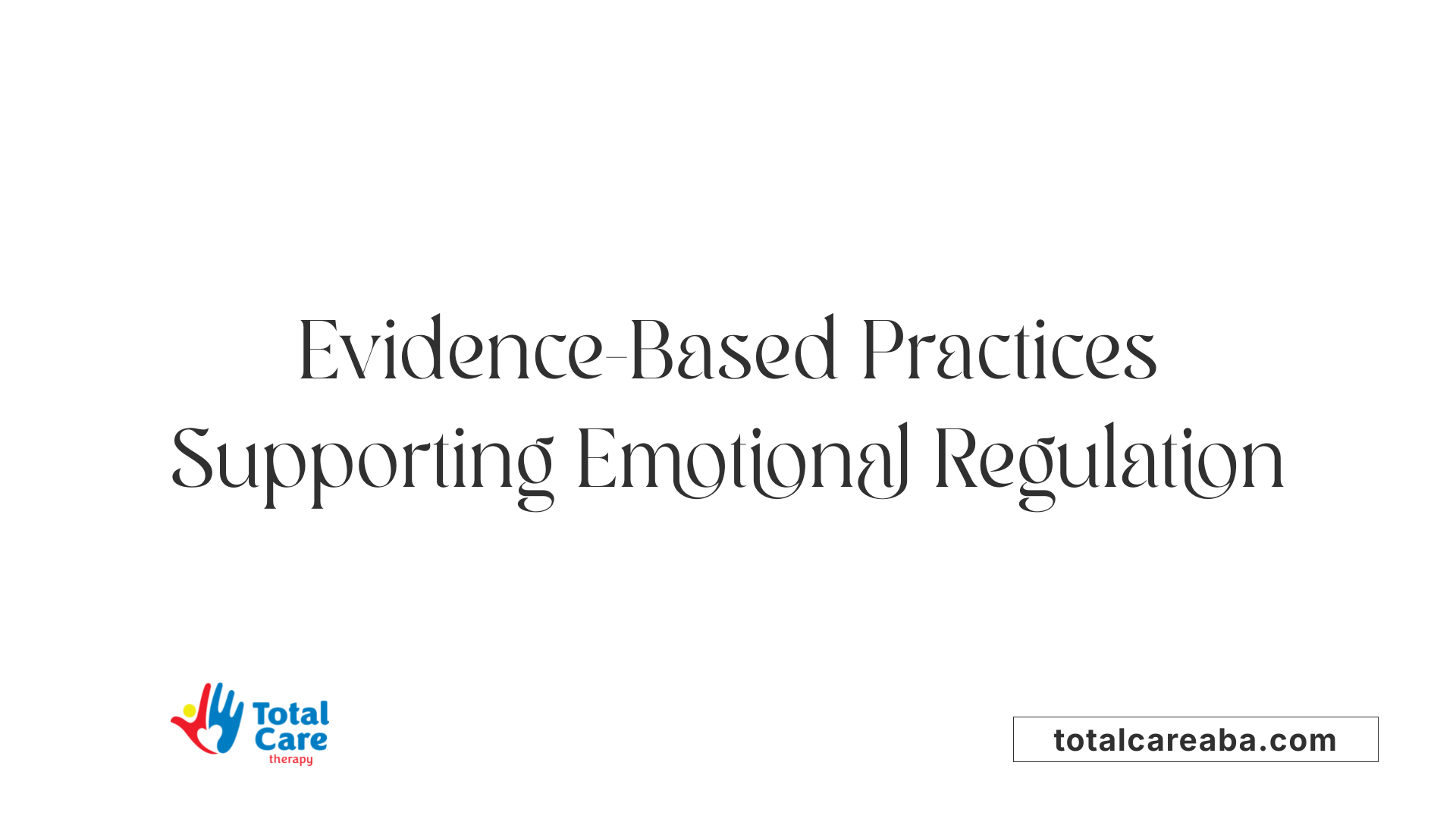
Evidence Supporting ABA for Emotional Regulation
Applied Behavior Analysis (ABA) therapy plays a pivotal role in supporting children with autism in managing their emotional responses. Research demonstrates that specific ABA strategies significantly enhance emotional regulation skills. Key aspects of effective ABA include the use of reinforcement systems, modeling behaviors, and delivering direct instruction tailored to the child's needs.
Some of the foundational strategies include:
- Visual aids: Help children recognize their emotions better and express them effectively.
- Role-playing: Provides safe opportunities for practicing emotional responses in different scenarios.
- Social stories: These narratives can clarify emotional situations and appropriate reactions, thereby aiding understanding.
Specific Practices and Their Outcomes
Knowledge of emotional regulation begins with the recognition of emotional states and their triggers. By employing evidence-based techniques, therapists can teach children methods to react positively to emotional distress. Outcomes observed in studies include:
- Improved emotional awareness and communication skills among children with autism.
- Increased ability to navigate daily emotional challenges due to established routines and coping strategies.
- Self-management techniques such as deep breathing and identifying emotions through a three-point scale, categorizing feelings into zones (calm, frustrated, angry), effectively empower children to manage their responses.
By involving families in the therapy process, reinforcing learned strategies at home, and providing immediate feedback during sessions, children can more readily implement emotional regulation skills in real-world settings, leading to lasting behavioral improvements.
Practical Support for Parents and Educators
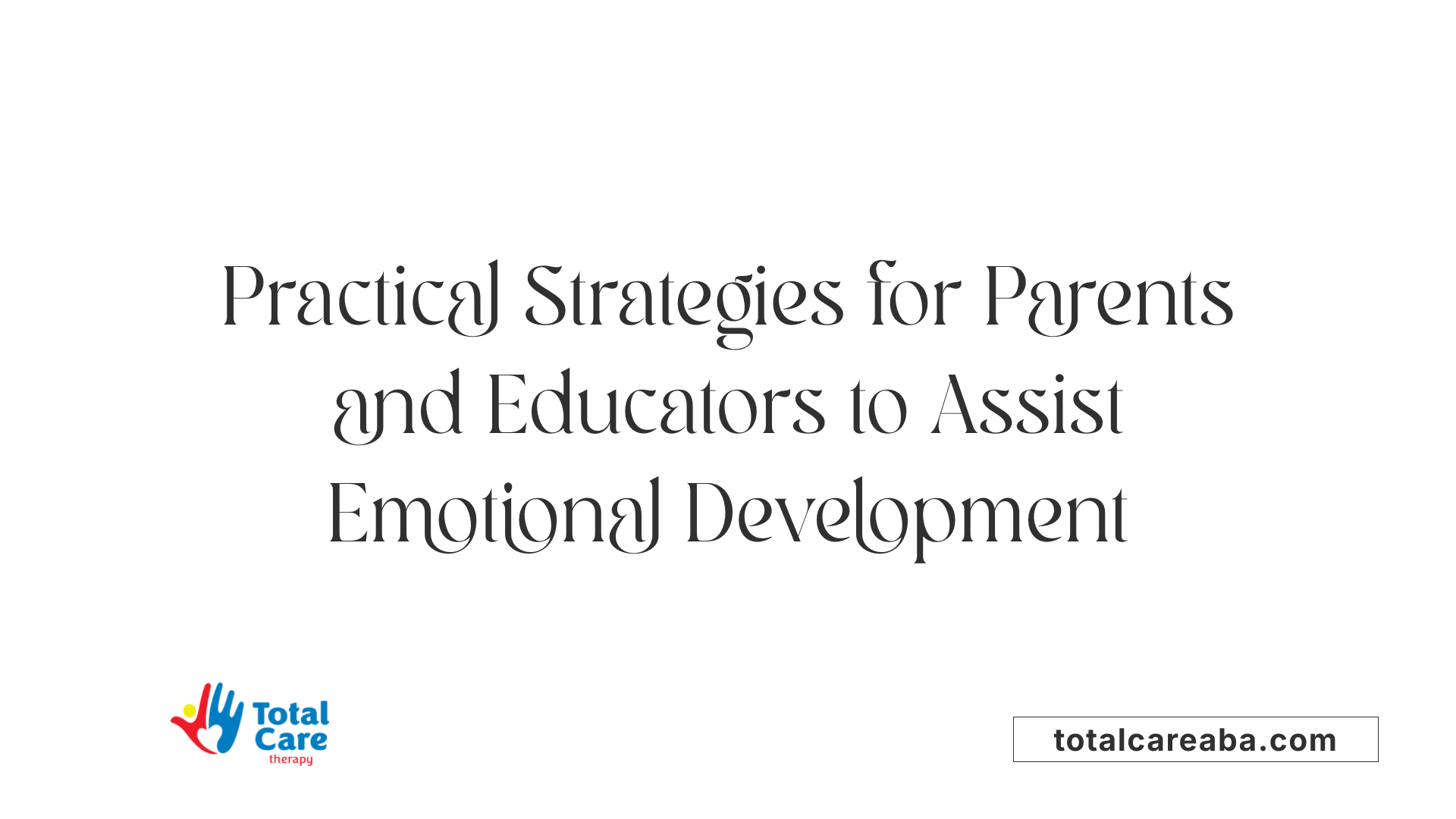
What practical strategies and resources can parents and educators use to support children's emotional regulation through ABA therapy?
Parents and educators play a vital role in supporting emotional regulation for children with autism. Establishing consistent routines can be particularly beneficial, as children on the spectrum often thrive on predictability. When disruptions occur, providing visual schedules can help children navigate changes, thereby reducing anxiety.
Effective Strategies for Emotional Regulation
- Set Routines: Regular daily schedules foster a sense of security.
- Use Visual Supports: Implement emotion cards or charts that label feelings, helping children recognize their emotional states.
- Practice Emotional Naming: Encourage children to articulate their emotions through role-playing or casual conversations. This fosters self-awareness and expression.
- Teach Deep Breathing: Incorporating calming techniques such as deep breathing exercises can be useful in managing rising emotions.
Tools and Resources to Enhance Understanding
Educators and parents can utilize various resources to reinforce emotional learning. Here are some helpful tools:
| Resource Type | Description | Purpose |
|---|---|---|
| Emotion Cards | Cards depicting various feelings and scenarios | Aid in recognition and verbalization of emotions |
| Social Stories | Short narratives to illustrate emotional situations | Help understanding appropriate responses to emotions |
| Mobile Apps | Applications focusing on emotional regulation skills | Engaging tools for practicing self-regulation strategies |
Involving family members in the therapy process can also enhance emotional understanding and support. Creating calm-down zones at home and practicing the strategies when children are calm helps ensure they can employ these techniques during moments of distress. By integrating these practical approaches, parents and educators can empower children to better navigate their emotional landscapes.
Family Involvement and Collaboration in Therapy
The role of family in supporting emotional regulation through ABA
Family involvement is crucial in the process of teaching emotional regulation skills to children with autism. When families actively participate in Applied Behavior Analysis (ABA) therapy, they reinforce the coping strategies learned during sessions. This collaborative approach fosters a better understanding of the child's emotional needs, enabling parents to provide appropriate support at home.
By practicing strategies taught by therapists, such as recognizing physical signs of distress and applying calming techniques, families create stable environments for their children. Parents can model how to label emotions, allowing children to articulate feelings like frustration or anxiety, thus improving their communication skills.
Creating a supportive home environment
A supportive home environment can significantly enhance emotional regulation in children with autism. Parents can establish routines that provide predictability, as children often thrive on structure. Routine mitigates anxiety and emotional dysregulation that disrupts their daily lives.
Creating a calming space within the home is another effective strategy. This can include setting up a quiet area with soft lighting, comforting items, and sensory toys to help the child calm down when overwhelmed. Additionally, implementing deep breathing exercises, using a calming toolkit, and preparing discussions about appropriate emotional reactions can provide children with the tools they need to manage their emotions effectively.
Moreover, teaching emotional regulation skills at home using concepts like a three-point scale can help children identify and respond to their emotions. When families engage together in these strategies, it not only strengthens the child's skills but also helps families connect and communicate better.
Utilizing Visual Aids and Social Stories
Benefits of Visual Aids and Social Stories
Visual aids and social stories are essential tools in Applied Behavior Analysis (ABA) therapy for children with autism. They simplify complex emotions and situations, making them easier to understand. By using images, charts, and narratives, these tools help convey emotional concepts that may be challenging for autistic children to grasp.
The benefits of visual aids include:
- Enhanced Communication: Visuals can break down barriers in communication, allowing children to express their feelings effectively.
- Memory Support: They reinforce learning by serving as reminders of previously discussed emotions and appropriate responses.
- Engagement: Visually stimulating materials help maintain children's interest during lessons.
How These Tools Aid Emotional Regulation
Visual aids and social stories play a crucial role in emotional regulation for children with autism. They help identify emotions and associated physical signs, allowing children to recognize when they are becoming upset or anxious. For instance, a visual 'three-point scale' categorizes emotions into zones—green for calm, yellow for frustration, and red for anger—facilitating self-awareness.
Furthermore, social stories provide context about emotions within specific situations. They guide children through potential responses, enabling them to rehearse reactions in a safe environment before facing real-life challenges. Overall, these tools empower children by equipping them with strategies to better manage their emotional experiences.
Mindfulness Techniques in ABA for Emotional Regulation
Incorporating mindfulness into ABA therapy
Mindfulness techniques are increasingly integrated into Applied Behavior Analysis (ABA) therapy to support emotional regulation in children with autism. These practices encourage self-awareness and help children recognize their emotions and the underlying causes. Techniques such as meditation and breathing exercises allow children to focus on the present moment, making them more adept at identifying feelings before they escalate into distress.
Using mindfulness within ABA can enhance traditional strategies by providing relaxation techniques that help children manage heightened emotional responses. Engaging in mindful activities promotes a calm state that is essential for processing emotions effectively.
The impact of mindfulness on emotional self-awareness
Incorporating mindfulness into therapy enhances emotional self-awareness among children with autism. By practicing mindfulness, they learn to tune into their physical sensations, thoughts, and emotions, creating a pathway to better understand their reactions. This awareness is crucial when children start to feel overwhelmed, as it enables them to apply previously learned coping strategies before reaching a peak of frustration or anxiety.
Overall, mindfulness not only supports emotional regulation but also fosters a sense of empowerment as children with autism gain more control over their emotional responses. This ultimately leads to healthier interactions and improved emotional well-being.
Parental Reinforcement Techniques
Importance of Reinforcement in Emotional Regulation
Reinforcement plays a vital role in helping children with autism develop emotional regulation skills. When parents positively reinforce their children for successfully employing coping strategies, it encourages the repetition of these behaviors. This not only builds confidence in their ability to manage emotions but also fosters a secure learning environment. For example, rewarding a child for using deep breathing techniques when they feel frustrated reinforces that strategy as a useful tool.
How Parents Can Effectively Use Reinforcement
Parents can adopt several effective strategies to reinforce emotional regulation:
- Positive Feedback: Provide immediate praise when a child successfully uses a coping mechanism. Phrases such as "Great job calming down!" can be very impactful.
- Reward Systems: Implement reward charts that track emotional regulation and coping strategy successes. This may include stickers or points leading to a larger reward as motivation.
- Model Behavior: Show emotional regulation in practice. Parents can verbalize their emotions and the responses they choose, reinforcing that it’s okay to feel and manage those feelings.
- Create Calm-down Kits: Encourage the use of tools like sensory toys or deep pressure items by rewarding their incorporation during emotional moments.
By consistently applying these techniques, parents can significantly enhance their children's ability to manage emotions and navigate various emotional situations.
Teaching Core Emotion Regulation Skills
Foundational Skills for Emotion Regulation in ABA
Teaching emotion regulation to children with autism begins with fundamental skills. For effective regulation, children must acquire:
- Basic Communication: Clear communication enables children to express their feelings and needs.
- Self-Awareness: Understanding their own emotions is essential for managing them.
- Impulse Control: Learning to pause before reacting can prevent escalated emotional responses.
- Understanding Reinforcement: Recognizing the impact of positive and negative consequences helps shape behavior.
- Emotional Recognition: Children need to identify different emotions and situations that trigger them, which is pivotal in emotional management.
Techniques for Teaching Self-Awareness and Impulse Control
Incorporating specific techniques enhances self-awareness and impulse control. Effective strategies include:
- Visual Aids: Using charts and images to help children recognize their emotions.
- Behavior Skills Training (BST): This involves instruction, modeling, rehearsal, and feedback, allowing children to practice and improve their calming strategies.
- Three-Point Scale: This emotional categorization system helps children rate their feelings (green for calm, yellow for frustration, red for anger), aiding in self-identification.
- Emotion Levels Chart: Creating a chart assists children in understanding their emotional states and appropriate reactions to various situations.
By focusing on these foundational skills and techniques, ABA therapy significantly boosts emotional regulation capabilities in children with autism.
Role-Playing and Real-World Applications
How role-playing aids emotional learning
Role-playing is a powerful tool in ABA therapy that enables children with autism to practice emotional recognition and regulation in a safe environment. Through role-playing scenarios, therapists can guide children to express their feelings and react appropriately to various social cues. This interactive approach allows children to explore different emotional responses without the pressure of real-world consequences.
Applying ABA skills in everyday situations
Incorporating ABA techniques into daily life enhances children's ability to manage their emotions. Strategies learned through role-playing, such as identifying emotions and practicing calming techniques, can be applied in real-world situations. For instance, a child might practice recognizing frustration signals during playtime, which can help them implement calming strategies like deep breathing or seeking help from an adult.
| Strategy | Description | Real-World Application |
|---|---|---|
| Role-playing scenarios | Practicing emotions and responses in a safe setting | Teaching how to express when feeling upset |
| Visualization techniques | Using visual aids for emotional recognition | Keeping emotion charts at home |
| Calm-down kits | Assembling tools to manage distress | Using stress balls during conflicts |
| Routine reinforcement | Establishing consistent schedules for comfort | Maintaining a predictable daily structure |
In summary, the integration of role-playing within ABA therapy not only aids in emotional education but also empowers children to navigate their feelings effectively in everyday situations.
Creating Calm Environments and Routines
Establishing Calming Routines
Children with autism often thrive on routine. Predictability in their daily activities can greatly reduce anxiety and the likelihood of emotional dysregulation. By establishing a consistent schedule, children can anticipate transitions and manage their emotional responses more effectively.
To enhance a child's emotional regulation, parents can incorporate calm-down practices into their routines. Techniques like deep breathing exercises, counting to 20, or engaging in calming activities—such as reading or listening to soft music—should be practiced regularly as preventative measures.
Using ABA Concepts to Design Calming Spaces
Applied Behavior Analysis (ABA) therapy offers valuable strategies for creating emotionally supportive environments. A calming space should be designed to be a safe haven where a child can retreat when feeling overwhelmed. Here are some key elements to consider when creating such spaces:
| Element | Description | Benefits |
|---|---|---|
| Visual supports | Use calming colors, soft textures, and comforting visuals | Enhances sense of safety |
| Deep pressure techniques | Incorporate weighted blankets or cushions | Provides sensory relief |
| Calm-down kits | Prepare kits with fidget toys, stress balls, or art supplies | Offers distraction and engagement |
By integrating routines that incorporate both ABA principles and calming spaces, children with autism can develop effective emotional regulation skills. This combination not only aids in managing emotional responses but also fosters an environment where they feel understood and supported.
Harnessing ABA Therapy for Emotional Success
ABA therapy offers transformative potential in guiding children with autism towards emotional regulation. The nuanced techniques, evidence-based practices, and collaborative efforts between therapists, parents, and educators empower children to navigate their emotional landscapes confidently. By incorporating strategies like mindfulness, role-playing, and consistent reinforcement, children not only learn to manage their emotions effectively but can also lead more harmonious lives. With continued research and dedication to personalized strategies, ABA therapy remains a beacon of hope and efficacy in the emotional development of children with ASD.








